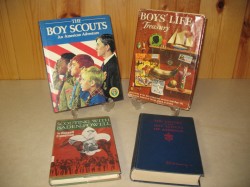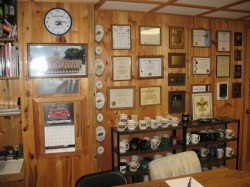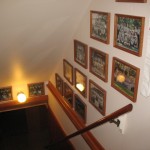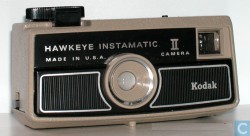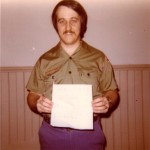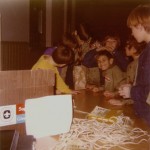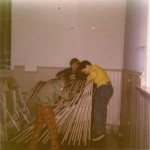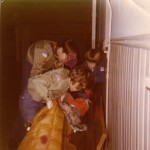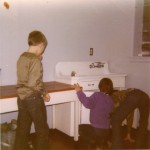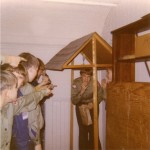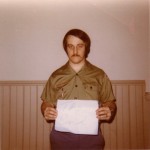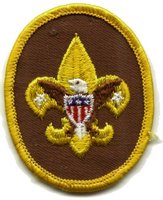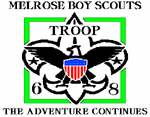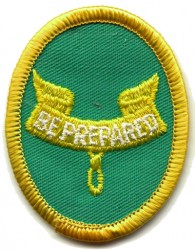 As we enter the third week of 100 Days of Scouting, it is time to ask you more trivia questions. As in previous trivia posts, the questions come from the 1986 Scout Trivia book. Today’s questions are taken from the “Basics and Badges” section of the book. (Keep in mind that these questions were based on the 1984 edition of the Boy Scout Handbook. This is important to keep in mind as you take this quiz.) Good Luck!
As we enter the third week of 100 Days of Scouting, it is time to ask you more trivia questions. As in previous trivia posts, the questions come from the 1986 Scout Trivia book. Today’s questions are taken from the “Basics and Badges” section of the book. (Keep in mind that these questions were based on the 1984 edition of the Boy Scout Handbook. This is important to keep in mind as you take this quiz.) Good Luck!
1) What is the color of the background on the Scout Rank Badge?
2) If Scouting is a game, what are the rules?
3) Why is the left hand used as the Scout handclasp?
4) How many merit badges are required for the rank of Life Scout?
5) What other items, besides merit badges, can be worn on the merit badge sash?
6) What do the three points of the Scout Badge represent?
7) What are the two ways a Scout can salute the United States flag?
8 ) How far must a Scout hike to complete the camping skill award?
9) What are the signs that you belong to the world brotherhood of Scouting?
10) With slight changes, what symbol is commonly used by Scouts around the world?
And that ends the questions for today.
Please put your pencils down.
Pass your paper to the Scout on your right.
Spit balls belong in the wastebasket.
Let’s check your answers.
1) Yellow.
2) The Scout Oath Scout Law, Scout Motto, and Scout Slogan.
3) Because it is the hand closest to the heart, the hand of friendship.
4) Eleven.
5) None.
6) The three parts of the Scout Oath.
7) Out of uniform – hand over heart. In uniform – the Scout Salute.
8 ) Two and one half miles.
9) The Scout sign, Scout handclasp, Scout Salute.
10) The trefoil badge.
Pass your papers back to their owner. How did you do this week? Everyone must have failed last week because no one left a comment.
100 Days of Scouting: Day 16.
